Avatar: The Last Airbender is the latest animated property to get the live-action treatment from Netflix. There has been some success with this trend, such as Netflix’s adaptation of the anime One Piece, but reimaginings such as this have to work hard to justify their existence, as their animated counterparts are already spectacular as they are. This newest version of Avatar ultimately produces mixed results. It’s easy to see how this would appeal to old and new audiences alike, and perhaps it’s a net positive on the whole. Yet, for every impressive quality, fundamental flaws limit what it can achieve.
The story of Avatar: The Last Airbender
Like its animated counterpart, the story is set in a fictional world where people known as benders can manipulate the elements, and one person, the Avatar, can manipulate all four. Their role is to be a global peacekeeper, with the Avatar reincarnating into a new body after they die. 12-year-old Aang (Gordon Cormier) is an airbender and the latest incarnation of the Avatar. He is told of his role when the neighboring Fire Nation threatens to launch a crusade, placing Aang in a position of responsibility that he isn’t ready for.
Aang leaves home to clear his head and ends up frozen for 100 years. When he wakes up, he learns that his people have been massacred, and the Fire Nation has conquered almost everything. Aided by the two siblings who discovered him, Katara (Kiawentiio) and Sokka (Ian Ousley), Aang leaves for the Northern Water Tribe to prevent another genocide from taking place. Meanwhile, Aang is pursued by the banished Prince Zuko (Dallas Liu), who seeks to capture him and reclaim his place as the heir to the Fire Nation.
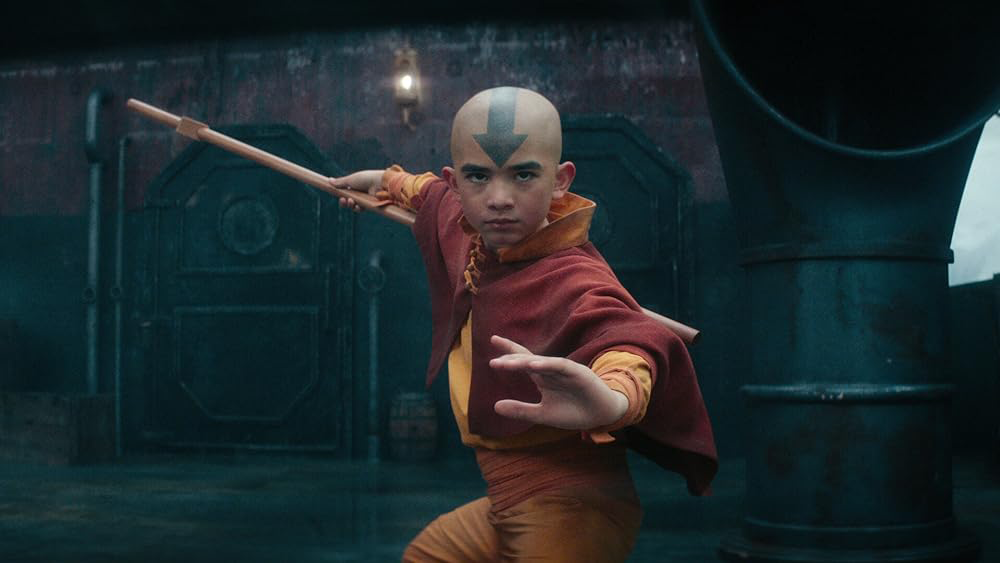
Netflix’s Avatar is a unique adaptation
Unlike disastrous remakes like 1998’s Psycho or 2019’s The Lion King, Netflix’s Avatar is thankfully not just an elongated shot-for-shot remake. There is a clear ambition to make this its own unique property. In adapting twenty 25-minute stories into eight one-hour-long episodes, this version takes many of the notable beats of the cartoon’s first season and even the odd thing from the second season. Be it significant side characters or key events that shape the narrative and theme, the show reassembles them like Lego pieces.
This extends to the tone, as the show opts for something more serious than its predecessor. While the cartoon could definitely be somber – look no further than episodes like Zuko Alone or The Southern Raiders – Netflix’s version is more akin to the seriousness of Game of Thrones, albeit without the gore or nudity. Its addressing of themes like trauma and guilt are more overtly discussed as a result.
This can be seen in much of the characterization, particularly of Aang. Gordon Cormier gives a charismatic performance, capturing the character’s youthful energy and generally happy nature very well. But, in this story, Aang’s survivor’s guilt from his nation’s extinction is the biggest influence on his decision-making. When he’s trying to save others, or consulting past Avatars for guidance, it’s his way of preventing history from repeating itself as much as his means of upholding the Avatar’s duties. Cormier handles this side of the character with gravitas and maturity, tapping into the deeper vulnerabilities of the role. It’s a variation of Aang whose woes are more forefront.
Other standout performances include Dallas Liu as Zuko and especially Paul Sun-Hyung Lee as Zuko’s uncle Iroh. Both actors capture the deeper emotions of their characters’ rich history while energetically embracing their roles’ more comedic aspects, such as Zuko’s stroppiness or Iroh’s affinity for jasmine tea. That the casting and production design largely stays true to the Asian influences of the source material further demonstrates the level of respect this show has for its predecessor and provides excellent opportunities for non-white actors and filmmakers.
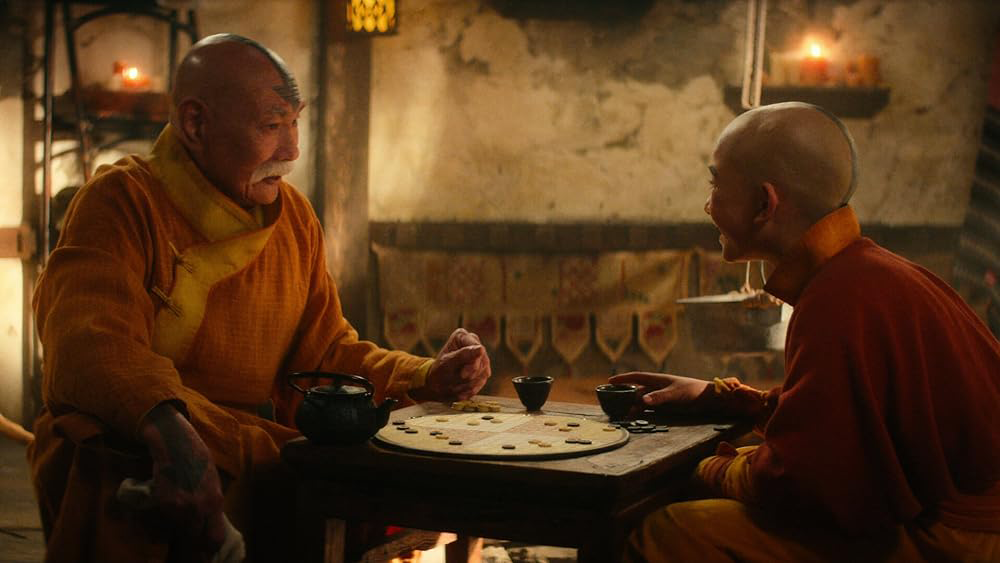
Netflix’s Avatar: The Last Airbender is missing some of the 2005 version’s charm
Yet, in attempting to be a bleaker, more condensed version of the story, Netflix’s Avatar loses a lot of potential charm and even much of the thematic strength that made the cartoon so deceptively strong. While much of the cartoon’s first season can reasonably be characterized as adventure-of-the-day stories, having such an episodic narrative made the world they explored feel more alive. History, scale, creativity, and compelling character growth were filtered into these episodes.
Netflix’s Avatar crams many of these stories into one episode apiece, such as episode three, which manages to weave together episodes five, ten, and seventeen of the cartoon’s first season, resulting in an interesting but somewhat jarring combination of elements that leaves little room for the fun style or messaging that those previous stories offered. In reconfiguring characters and plot points from the original, Netflix’s Avatar: The Last Airbender certainly covers many of the important beats for present and future storytelling, but it also loses a lot of these strengths, becoming an abridged version of the tale that lacks the thematic punch it could have otherwise had.
Take how Aang and Zuko’s pasts are conveyed this time around. Aang’s backstory with the Air Nomads is one of the first things we see, while Zuko’s is largely portrayed in episode six. On their own, these backstories are powerful. Aang’s neglect of his duty on the day of his nation’s extinction is the biggest contributing factor to his guilt. Meanwhile, Zuko’s literal scarring at the hands of his father serves as a reminder of what he has lost and strives to get back.
The original show told their backstories side by side in the episode The Storm. It’s one of the cartoon’s best episodes because in showing the protagonist and antagonists’ pasts in parallel with each other, we not only get two haunting stories of trauma, but we can also see how surprisingly similar Aang and Zuko are, as well as their key difference. Where Aang is trying to run away from trauma, Zuko is entirely driven by it.
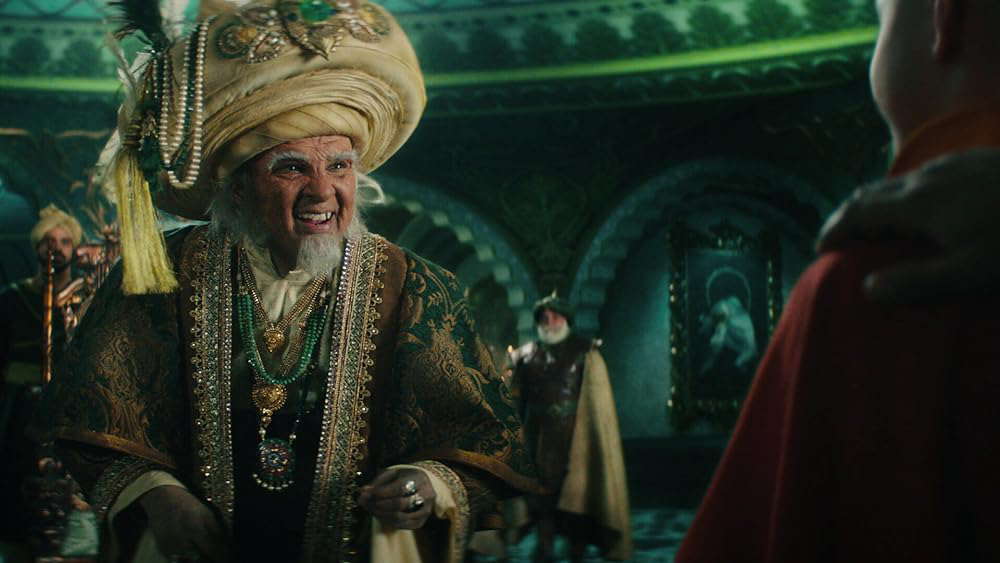
Awkward dialogue hampers the storytelling
By separating these backstories into their own sections, Netflix’s Avatar: The Last Airbender obfuscates the subtextual depth of the characters and the theme of trauma as a whole. Instead, it conveys many of its messages, including this one, through incredibly laden dialogue. Most notable is a particularly forced moment in episode one when Katara and Sokka’s grandmother explains the passing of 100 years to Aang in a verbatim monologue to the cartoon’s iconic opening titles. This is despite the show having begun the story from Aang’s perspective, and thus she is conveying information that we can already discern from the text.
Where visual emotion or action-based storytelling could have surmised the epicness or power of the story and character arcs, the show often opts to explain it through dialogue. This also hampers many of the performances. It’s an admirable ensemble of actors, and there’s no shortage of enthusiasm for their roles. But awkward dialogue such as this is very difficult to deliver in ways that sound organic. Even Meryl Streep would have a hard time emoting some of this writing.
Avatar: The Last Airbender shines when the focus is on characters first
It’s a frustrating outcome as there are a lot of admirable moments and occasionally remarkable ones. When the characters aren’t trying to progress to the next plot point and instead have a moment to be themselves or discuss their shared dynamics, Netflix’s Avatar: The Last Airbender feels much more lively and confident. Sokka gets the most satisfying development from this, as his conversations with other characters, from Katara to Suki (Maria Zhang) to Yue (Amber Midthunder), does a lot to paint him as an individual so crushed by the weight of duty that he’s rarely had time to think about his own skills and wants. Other moments, such as Katara’s plea to Aang during the climactic battle, reaffirms the trio’s family dynamic while giving the actors time to demonstrate their chemistry with each other.
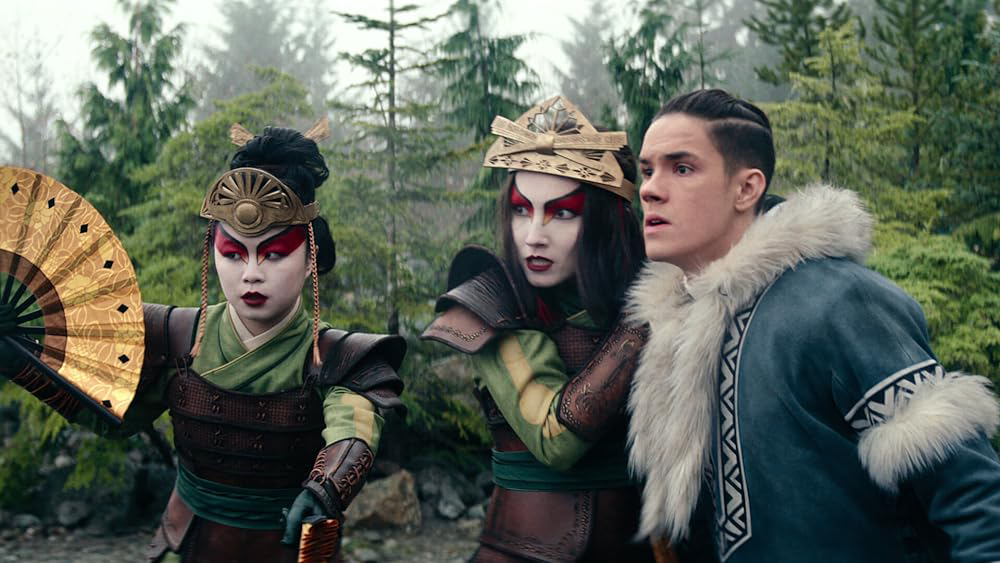
Perhaps the best scene is a new moment that wasn’t in the original. Those familiar with the cartoon will know that underneath Iroh’s eccentric, joyful exterior is great pathos. Iroh used to be a legendary warmonger but became disillusioned with the Fire Nation’s goals when his son, Lu Ten, was killed in battle. Netflix’s Avatar: The Last Airbender includes a flashback to Lu Ten’s funeral. Everyone attending gives Iroh hollow, meaningless condolences, and, initially, Zuko does so too. But then he returns to Iroh and recounts a fond story about Lu Ten.
Not only is the empathy of this scene as staggering as the melancholia, largely due to Lee’s sublimely subdued grief, but it adds a new dimension to Iroh and his deep devotion to his nephew since Zuko showed him genuine kindness when no one else did. The inclusion of a score that echoes the heartbreaking song Leaves From the Vine is a nice touch that adds to the power of the moment. It’s a phenomenal tearjerker that rivals some of the greatest scenes from the cartoon.
Yet these moments are sadly infrequent, as the story’s mystery, thematic resonance, and even immersion are lost in favor of brooding solemnity and plot prioritization that makes the world feel smaller. Bolstering this feeling are very hit-and-miss special effects. While the CGI is, for the most part, impressive – particularly the fire and waterbending sequences – the photorealism is as much a hindrance as a merit, as it removes a lot of style from the scale and choreography. While Aang’s airbending has its moments, it largely feels constrained by what the greenscreen or set dimensions allow. Some of the fights are undeniably cool, such as how Katara creatively uses her waterbending when fighting Pakku, but the live-action component limits the potential energy or chaos of the brawling.
Without the edge of exaggeration possible with animation, this adaptation can’t tap into the material’s full potential
Some may dismiss the cartoon because of its position as an animated show – an elitist attitude that ignores animation’s contributions to great film and television, be it Tom and Jerry or Grave of the Fireflies. But a lot of Avatar’s success, in hindsight, was because of its status as a cartoon. The exaggeration that animation allows for means more emphasis on the spectacle, power, and expressions of the story, characters, and action, and thus more flair in its storytelling and excitement factor. This Netflix version certainly has engaging fights and wonderful character moments, but without that additional edge of exaggeration, it can only occasionally tap into the richness of its material.
It’s understandable why this version has started garnering its own fanbase. There’s an evident respect and love for the source material that seeps into its craft. The production design is fantastic, the music is as beguiling as ever, and the performances, while limited by the writing, mostly have charm and depth to them. Some episodes, particularly episodes two (Warriors) and six (Masks), are legitimately good hours of television when taken as their own stories.
Meanwhile, some of the changes in characterization, be it Iroh’s backstory or the inclusion of Azula (Elizabeth Yu) one season earlier than before, offer plenty of intrigue. But it fundamentally doesn’t have the warmth or sense of adventure that made the original Avatar: The Last Airbender so compelling. While it’s noble of the show to try and differentiate itself through the darker tone, it comes at the expense of the deeper emotions and subtextual captivation that made the source material’s fantasy adventure genre just that much more special.
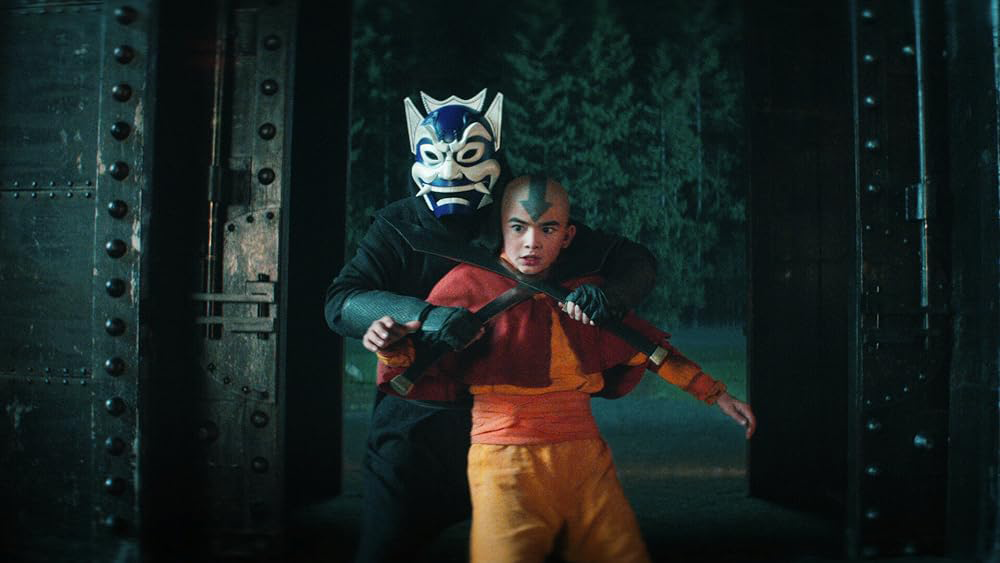
Final thoughts on Netflix’s Avatar: The Last Airbender
One sincerely hopes that Netflix’s Avatar: The Last Airbender will get another season, as it’s got a lot of potential. It’s a marked improvement from the M. Night Shyamalan movie, and anyone who thinks this show is comparable to the film needs to stop being so hyperbolic. But, currently, there’s little in here that justifies watching it over its cartoon source material despite its finer qualities. If Netflix’s Avatar wants to be remembered as fondly as Nickelodeon’s Avatar, then it needs to tap into the franchise’s eccentric appeal and rich themes more astutely, the very things that made the original a masterpiece.
Avatar: The Last Airbender is now streaming on Netflix.
Have you watched the new Avatar: The Last Airbender yet? What did you think? Are you excited that Netflix just renewed it for 2 new seasons? Let us know on X @MoviesWeTexted.
You might also like…
Avatar: The Last Airbender (2005): One of the Greatest TV Shows of All Time
